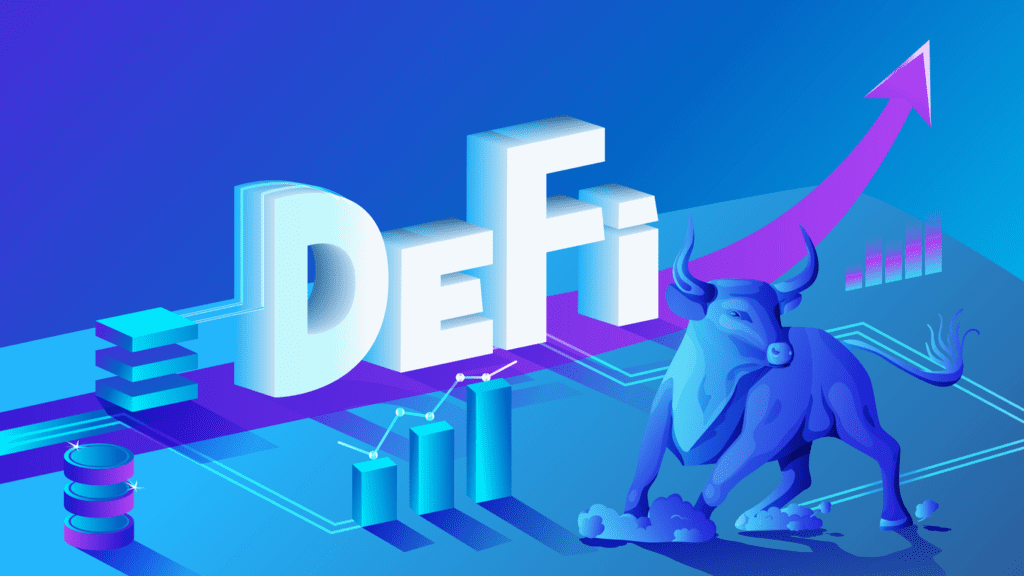In a world increasingly driven by technology and innovation, the rise of Decentralised Finance (DeFi) has ushered in a paradigm shift in the financial landscape. DeFi, an abbreviation for Decentralised Finance, encompasses a diverse array of blockchain-based financial applications and platforms that operate autonomously, without the need for intermediaries such as traditional banks or financial institutions. This article explores the disruptive potential of DeFi, its underlying principles, driving forces, impact, challenges, and risks.
Understanding DeFi: A New Dawn for Financial Empowerment
DeFi fundamentally reimagines how financial services are conceptualized and delivered. It harnesses the inherent capabilities of blockchain technology to empower users with direct controlover their assets and financial activities. Gone are the days of relying solely on traditional intermediaries; DeFi leverages decentralization to offer open, permissionless, and inclusive alternatives to conventional financial systems.
The Pillars of DeFi: Building Blocks of a Revolutionary Ecosystem
Decentralised Exchanges (DEXs): Pioneering Peer-to-Peer Trading

At the heart of the DeFi revolution lies decentralised exchanges (DEXs). These platforms enable users to directly trade cryptocurrencies with one another, eliminating the need for intermediaries. By facilitating peer-to-peer transactions, DEXs enhance transparency, reduce fees, and promote financial autonomy.
Smart Contracts: The Digital Enablers of Financial Operations
DeFi’s backbone is composed of smart contracts – self-executing agreements with predefined terms encoded into code. These contracts streamline a multitude of financial operations, from lending and borrowing to trading. Smart contracts automate processes, ensuring efficiency, security, and trust in the absence of traditional intermediaries.
Lending and Borrowing Protocols: Enabling Financial Flexibility
DeFi introduces innovative lending and borrowing protocols that empower users to lend their assets and earn interest or borrow assets against collateral. Automated algorithms govern these protocols, setting interest rates and evaluating creditworthiness, fostering a dynamic ecosystem of financial interactions.
Stablecoins: Bridging the Volatility Gap
In response to the inherent volatility of cryptocurrencies, stablecoins have emerged as a solution within the DeFi framework. These digital assets are pegged to real-world stable assets, such as fiat currencies, providing users with a stable store of value and a medium of exchange within the DeFi ecosystem.
Catalysts Driving the DeFi Revolution
Financial Inclusion: Bridging Gaps and Removing Barriers
DeFi has shattered the barriers of financial exclusion by granting access to services for millions of unbanked and underbanked individuals globally. With a mere internet connection and a crypto wallet, DeFi offers a gateway to financial participation, bridging socioeconomic divides.
Interoperability and Composability: Fostering Collaboration and Innovation
DeFi’s unique strength lies in its interoperable nature, enabling diverse protocols and applications to seamlessly integrate and interact. This synergy stimulates innovation and encourages the creation of novel financial services by building upon existing foundations.
Permissionless Innovation: Empowering Developers for Unconstrained Progress
DeFi empowers developers to ideate, create, and deploy financial products independently, without the need for centralized approval. This permissionless innovation accelerates the pace of progress, nurturing a culture of continuous growth and evolution.
Yield-Generating Opportunities: Maximizing Returns through DeFi Strategies
DeFi offers a myriad of avenues for investors seeking higher yields. From liquidity provision to yield farming, users can actively engage in strategies that generate rewards and incentives, effectively maximizing the returns on their assets.
The Transformative Impact of DeFi on Finance
Disintermediation: Pioneering Peer-to-Peer Finance
DeFi challenges the conventional role of intermediaries, such as banks, by enabling direct, peer-to-peer interactions. This disintermediation not only reduces costs but also fosters a more transparent and equitable financial landscape.
Financial Sovereignty: Putting Control in the Hands of Users
With DeFi, individuals exercise complete control over their funds and private keys, mitigating the risk of censorship and asset seizure. This financial sovereignty empowers users to navigate the financial realm autonomously.
Cost Efficiency: Lowering the Barriers to Financial Access
DeFi’s automated processes and absence of intermediaries translate into reduced costs for users. Traditional financial services often entail high fees, which DeFi effectively mitigates, making financial participation more affordable.
Global Accessibility: Fostering Inclusion Beyond Borders
DeFi transcends geographical limitations, operating on the internet and accessible to anyone with an internet connection. This global accessibility breaks down barriers and advances financial inclusivity on a truly international scale.
Innovation and Experimentation: Catalyzing Novel Financial Solutions
DeFi’s open and collaborative environment encourages continuous innovation and experimentation. Developers can craft novel financial instruments tailored to specific needs and preferences, expanding the realm of possibilities.
Navigating Challenges and Risks in the DeFi Landscape
While the rise of DeFi holds immense promise, it is not without its challenges and risks:
Security Concerns: Safeguarding Against Smart Contract Vulnerabilities
The DeFi space is susceptible to smart contract vulnerabilities, potentially resulting in breaches and loss of funds. Ensuring robust security measures is imperative as the ecosystem matures.
Regulatory Uncertainty: Balancing Innovation with Compliance
The absence of clear regulatory frameworks poses challenges for DeFi’s mainstream adoption and may give rise to legal uncertainties. Striking a balance between innovation and regulatory compliance remains a crucial consideration.
User Education: Bridging the Knowledge Gap
DeFi platforms often demand a certain level of technical proficiency, potentially deterring new users. Educating users about risks, best practices, and the intricacies of DeFi is pivotal to fostering responsible participation.
DeFi’s Evolutionary Journey
The meteoric rise of Decentralised Finance marks a watershed moment in the evolution of financial systems. With its unwavering focus on inclusivity, innovation, and financial autonomy, DeFi has galvanized a global community of users, propelling the rapid growth of decentralised applications and protocols. While challenges related to security and regulation persist, the transformative potential of DeFi in reshaping the global financial landscape cannot be underestimated. As the DeFi ecosystem continues to mature, it stands poised to redefine finance, ushering in an era of openness, accessibility, and equitable financial opportunities.
The Hindustan Herald Is Your Source For The Latest In Business, Entertainment, Lifestyle, Breaking News, And Other News. Please Follow Us On Facebook, Instagram, Twitter, And LinkedIn To Receive Instantaneous Updates. Also Don’t Forget To Subscribe Our Telegram Channel @hindustanherald











































